Thingiverse

Multiplexed Prosthetic Devices by sandrabaskharon
by Thingiverse
Last crawled date: 3 years ago
Offloading Neuromechanical Interface Control to Multiplexed Prosthetic Devices using Interactive RFID Enabled Micro-controllers
Offloading Neuromechanical Control to Multiplexed Prosthetic Devices using Interactive RFID enabled, Embedded Microcontrollers for both Complex object Manipulation and Globally Assistive Applications
For the most part prosthetic devices use non computer enabled mechanical components. The most advanced prototype systems, currently under development, seek to create neuro-mechanical interfaces. These approaches rely on the concept of primary "human control". However, many complex movements are in fact unconscious or “Zombie” programs running in different parts of the brain. In other words, we don’t have to think about them. This project enables the "environment" to allow a prosthetic device to control itself, thereby “off loading” enormous amounts of neural control processing while permitting the device to autonomously perform complex movements and tasks.
This experiment multiplexes an RFID sensor and servo actuators within a 3-D printed prosthetic hand. This approach places an RFID antenna in the palm of a 3-D printed prosthetic hand, connecting it to an embedded Arduino-Uno. This allows the prosthetic device to read different RFID tags on objects in the environment. Each tag may be associated with a different set of functions which would determine the movement of individual servo motors. This could give the prosthetic device the ability to execute different complex movements depending on which RFID tag is read by the antenna.
It may be possible to include a broad range of sensors within the 3-D printed prosthetic hand to expand innate human capabilities. This might even include data loggers to "remember" the life experience of the prosthetic device and a broad range of unique sensors.
Background
The field of prosthetics has experienced major advances over the centuries. Unfortunately many of these advances have been associated with human conflict (for example, injured war fighters). For the most part, “smart” prosthetic devices have only recently become available, however they are often very expensive and rarely are they “customized” to an individual’s preferences or needs. Fortunately, the development of truly affordable embedded electronics, inexpensive 3-D scanning software and low cost 3-D printing platforms (in an open access environment) has revealed shocking new possibilities at an unprecedented pace of development and practical application.
Experimental Design
Step 1: Configure Arduino UNO to read an RFID tag
Step 2: Configure Arduino UNO to control a 9g mini servo motor
Step 3: Write Arduino sketch to move servo after reading RFID tag
Step 4: Modify sketch to move different servos with different tags
Step 5: Design and 3D print prototype fingers with servo mounts
Step 6: Revise design to use springs as joints
Step 7: Combine servos, RFID Antenna, 3D printed parts and Arduino.
Guino
“Guino” is a free Arduino Dashboard that allows a user to send information from the Arduino board, over the serial port and view this information on a host computer. This program shows the current position of each servo motor, the unique tag number identified by the RFID antenna and the action (“function” in the arduino sketch) that is linked to that tag. This dashboard need not be connected to the prosthetic, but allows a convenient means of illustrating the microcontroller actions.
Results
Each of three tags was brought close to the RFID Antenna, 100 times. The number of times that the system correctly identified the tag number and correctly executed the appropriate function were recorded in tabular form. For these 300 separate tests, there were zero incorrect tag identifications and 100% success in executing the appropriate function in the Arduino sketch (embedded microcontroller). For this series of tests, the antenna, microcontroller and servo motors performed reliably. The finger design is unique to this project. The mechanical properties of the “spring” joints can be changed by using different springs, varying the length of the springs between the segments or by using more than one spring in the joint.
Conclusion
This project has demonstrated that it is possible to offload neuromechanical control for complex movements to an RFID enabled prosthetic device. An embedded microcontroller correctly identifies several unique RFID tags.
Each RFID tag, when identified by the embedded microcontroller, is able to trigger a specific function in the Arduino script which in turn controls the movement of 5 separate servo motors in the prostatic hand. This project demonstrates that complex movements corresponding to tasks such as “grasp”, “pinch”, and “count” are easily and reliably achievable.
Embedding “Capsule RFID tags” in the tips of each prosthetic finger, would allow an interactive work station to identify at least 5 different, unique, RFID signals and respond accordingly to the presence of the prosthetic device.
This project has used the free “Guino” serial report monitor to display the interactive data stream between the RFID antenna, various types of RFID tags, the embedded microcontroller, and the Servo motors.
Summary: This project demonstrates a potentially useful approach to offloading neuromechanical interface control for both complex object manipulation and globally assistive prosthetic applications.
Future Applied Research and Development
Temperature and Hall effect sensor (magnetic fields)
Individual human scanned and 3D printed prosthetics
2-3 axis tilt sensor for release and pick up
2-3 axis accelerometer for speed and direction
Capacitive Touch sensor for direct computer interface
Infra Red (IR) proximity sensor
Position sensing servos, “inverse kinetic” training
RFID Capsules in finger tips for workstation interactions
Wi-Fi prosthetic to prosthetic and remote between people
Smart phone “App” reprogramming and QR code reader
NFC Near Field Communication between limbs (walking)
This high school science project was overseen by:
Dr. R. Siderits at RWJUHH
Awards
The United States Air Force: Certificate of Achievement for an Outstanding Science and Engineering Fair Project
Intel Excellence in Computer Science Award: for outstanding achievement in the category of Computer Science at the Mercer Science and Engineering Fair
The Yale Science and Engineering Association Inc. Award: for Most Outstanding Exhibit in Computer Science, Engineering, Physics, or Chemistry
The Rider University Award: for the Most Superior Project
First Place award in the Computational Biology and Bioinformatics of the 2015 Mercer Science and Engineering Fair
Grand Prize of the 2015 Mercer Science and Engineering Fair
Offloading Neuromechanical Control to Multiplexed Prosthetic Devices using Interactive RFID enabled, Embedded Microcontrollers for both Complex object Manipulation and Globally Assistive Applications
For the most part prosthetic devices use non computer enabled mechanical components. The most advanced prototype systems, currently under development, seek to create neuro-mechanical interfaces. These approaches rely on the concept of primary "human control". However, many complex movements are in fact unconscious or “Zombie” programs running in different parts of the brain. In other words, we don’t have to think about them. This project enables the "environment" to allow a prosthetic device to control itself, thereby “off loading” enormous amounts of neural control processing while permitting the device to autonomously perform complex movements and tasks.
This experiment multiplexes an RFID sensor and servo actuators within a 3-D printed prosthetic hand. This approach places an RFID antenna in the palm of a 3-D printed prosthetic hand, connecting it to an embedded Arduino-Uno. This allows the prosthetic device to read different RFID tags on objects in the environment. Each tag may be associated with a different set of functions which would determine the movement of individual servo motors. This could give the prosthetic device the ability to execute different complex movements depending on which RFID tag is read by the antenna.
It may be possible to include a broad range of sensors within the 3-D printed prosthetic hand to expand innate human capabilities. This might even include data loggers to "remember" the life experience of the prosthetic device and a broad range of unique sensors.
Background
The field of prosthetics has experienced major advances over the centuries. Unfortunately many of these advances have been associated with human conflict (for example, injured war fighters). For the most part, “smart” prosthetic devices have only recently become available, however they are often very expensive and rarely are they “customized” to an individual’s preferences or needs. Fortunately, the development of truly affordable embedded electronics, inexpensive 3-D scanning software and low cost 3-D printing platforms (in an open access environment) has revealed shocking new possibilities at an unprecedented pace of development and practical application.
Experimental Design
Step 1: Configure Arduino UNO to read an RFID tag
Step 2: Configure Arduino UNO to control a 9g mini servo motor
Step 3: Write Arduino sketch to move servo after reading RFID tag
Step 4: Modify sketch to move different servos with different tags
Step 5: Design and 3D print prototype fingers with servo mounts
Step 6: Revise design to use springs as joints
Step 7: Combine servos, RFID Antenna, 3D printed parts and Arduino.
Guino
“Guino” is a free Arduino Dashboard that allows a user to send information from the Arduino board, over the serial port and view this information on a host computer. This program shows the current position of each servo motor, the unique tag number identified by the RFID antenna and the action (“function” in the arduino sketch) that is linked to that tag. This dashboard need not be connected to the prosthetic, but allows a convenient means of illustrating the microcontroller actions.
Results
Each of three tags was brought close to the RFID Antenna, 100 times. The number of times that the system correctly identified the tag number and correctly executed the appropriate function were recorded in tabular form. For these 300 separate tests, there were zero incorrect tag identifications and 100% success in executing the appropriate function in the Arduino sketch (embedded microcontroller). For this series of tests, the antenna, microcontroller and servo motors performed reliably. The finger design is unique to this project. The mechanical properties of the “spring” joints can be changed by using different springs, varying the length of the springs between the segments or by using more than one spring in the joint.
Conclusion
This project has demonstrated that it is possible to offload neuromechanical control for complex movements to an RFID enabled prosthetic device. An embedded microcontroller correctly identifies several unique RFID tags.
Each RFID tag, when identified by the embedded microcontroller, is able to trigger a specific function in the Arduino script which in turn controls the movement of 5 separate servo motors in the prostatic hand. This project demonstrates that complex movements corresponding to tasks such as “grasp”, “pinch”, and “count” are easily and reliably achievable.
Embedding “Capsule RFID tags” in the tips of each prosthetic finger, would allow an interactive work station to identify at least 5 different, unique, RFID signals and respond accordingly to the presence of the prosthetic device.
This project has used the free “Guino” serial report monitor to display the interactive data stream between the RFID antenna, various types of RFID tags, the embedded microcontroller, and the Servo motors.
Summary: This project demonstrates a potentially useful approach to offloading neuromechanical interface control for both complex object manipulation and globally assistive prosthetic applications.
Future Applied Research and Development
Temperature and Hall effect sensor (magnetic fields)
Individual human scanned and 3D printed prosthetics
2-3 axis tilt sensor for release and pick up
2-3 axis accelerometer for speed and direction
Capacitive Touch sensor for direct computer interface
Infra Red (IR) proximity sensor
Position sensing servos, “inverse kinetic” training
RFID Capsules in finger tips for workstation interactions
Wi-Fi prosthetic to prosthetic and remote between people
Smart phone “App” reprogramming and QR code reader
NFC Near Field Communication between limbs (walking)
This high school science project was overseen by:
Dr. R. Siderits at RWJUHH
Awards
The United States Air Force: Certificate of Achievement for an Outstanding Science and Engineering Fair Project
Intel Excellence in Computer Science Award: for outstanding achievement in the category of Computer Science at the Mercer Science and Engineering Fair
The Yale Science and Engineering Association Inc. Award: for Most Outstanding Exhibit in Computer Science, Engineering, Physics, or Chemistry
The Rider University Award: for the Most Superior Project
First Place award in the Computational Biology and Bioinformatics of the 2015 Mercer Science and Engineering Fair
Grand Prize of the 2015 Mercer Science and Engineering Fair
Similar models
thingiverse
free

Enclosure Box for your Arduino RFID-Project by kavasmlikon
...ot design with cutouts for an interlocking t-bolt construction to stabilize the box using 3mm x 10mm machine screws and 3mm nuts.
grabcad
free

Myo-electrically controlled prosthetic elbow
...esign an accurate socket.
myoelectric sensors attached to motor nerve points dictate motion control with the help of an arduino.
grabcad
free

Servo Motor for Handicapped chair wheel
...s project is used by girls students in college computer and science.
i helped them to design and manufacture the parts of design.
grabcad
free

Arduino Biped Robot (Humanoid Robot) With Ultrasonic Sensor
...ode in github:
https://github.com/alisodal1997/
if you want to watch the video of this project :
https://youtu.be/xjkspbndf18
cg_trader
free

Servo Motor for Handicapped chair wheel
...s project is used by girls students in college computer and science.
i helped them to design and manufacture the parts of design.
grabcad
free

Prosthetic arm
...prosthetic arm
grabcad
prosthetic arm
can be 3d printed and controlled using servo motors through wires
grabcad
free

Robotic Arm (Arduino Servo Motor)
...robotic arm (arduino servo motor)
grabcad
this robotic arm is controlled my arduino 5v servo motors
grabcad
free

Pulse Ferrite-backed Embedded NFC Antenna
...ards or even nfc enabled cell phones (e.g. applepay).
this emv antenna is under the iso/iec 14443 contactless payment standard.
3dwarehouse
free

Solar Tracking (MPPT Controller)
...ultiplex arduino uno buck boost converter solar controller mppt ldr resistor 10k motor servo 180 degree bearing baterai accu 12 v
thingiverse
free

9g Servo Light Switch Flipper by willreale
...rews overtop any standard light switch. attach a servo and plug it into a microcontroller like an arduino for a fun easy project!
Multiplexed
3d_export
$50

Opera house 002 3D Model
...opera theatre film armchair seat auditorium chair studio arena conference room
opera house 002 3d model northern3d 41818 3dexport
3d_export
$50

Opera house 001 3D Model
...opera theatre film armchair seat auditorium chair studio arena conference room
opera house 001 3d model northern3d 41805 3dexport
3d_export
$50

Opera house 003 3D Model
...opera theatre film armchair seat auditorium chair studio arena conference room
opera house 003 3d model northern3d 41817 3dexport
3d_ocean
$19

TOJO System Bed
...ojo, material – beech multiplex, untreated, fabric, 3d model – konrad rakowski, package conteins multiple models: - tojo_beddi...
thingiverse
free

Multiplex Green connector Support Supporto a parete connettore multiplex by malpom
...rto a parete connettore multiplex by malpom
thingiverse
multiplex green connector support supporto a parete connettore multiplex
thingiverse
free

Gemini multiplex motor mount V2 by romero
...es: multiplex mentor, multiplex funcub, multiplex easy cub, multiplex acromaster, multiplex parkmaster 3d, multiplex dog fighter.
thingiverse
free

tapa conector multiplex by Santisbracing
...tapa conector multiplex by santisbracing
thingiverse
proteccion par aconector multiplex anti cortocircuitos
thingiverse
free

Gemini multiplex motor mount V1 by romero
...es: multiplex mentor, multiplex funcub, multiplex easy cub, multiplex acromaster, multiplex parkmaster 3d, multiplex dog fighter.
thingiverse
free

Multiplex Montagerahmen by XYZDesignHM
...multiplex montagerahmen by xyzdesignhm
thingiverse
extrudr petg material .
thingiverse
free

Multiplex Mentor RC Motor Mount by tapps
...multiplex mentor rc motor mount by tapps
thingiverse
motor mount for multiplex mentor and other multiplex rc aircrafts.
Prosthetic
turbosquid
$49

Prosthetic Arm
...uid
royalty free 3d model prosthetic arm for download as max on turbosquid: 3d models for games, architecture, videos. (1556291)
turbosquid
$20

Prosthetic for small dogs 3D print model v2
...osthesis for small dogs 3d print model v2 for download as stl on turbosquid: 3d models for games, architecture, videos. (1290474)
3d_export
$10

knee joint prosthesis with guides sample of individual prosthetics
...mm, 20 grams tibial component: ti6al4v material, 76×77×70 mm, 90 grams femoral component: cocrmo material, 70×52×62 mm, 290 grams
3d_export
$5
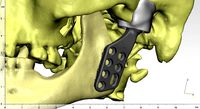
individual tmj prosthesis real operation
...left tmj. it consists of the following parts:: * prosthetic condylar process (ti6al4v); * joint cavity prosthesis (high molecular...
3d_export
$44
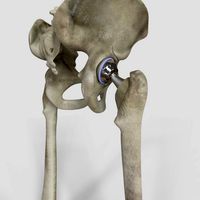
Hip Replacement
...damaged bone and cartilage is removed and replaced with prosthetic components. the damaged femoral head is removed and replaced...
3d_export
$10

itap implant osteointegration operation
...the implant. tested on more than 15 operations. itap prosthetic is an installation of "intraosseous transcutaneous amputation prosthesis". in...
thingiverse
free

Prosthetic arm
...prosthetic arm
thingiverse
prosthetics arm
3d printable
thingiverse
free

Prosthetic Arm
...prosthetic arm
thingiverse
a prosthetic arm purely for asthetic purposes. it was made for a client's wedding.
thingiverse
free

Dog Prosthetic by 3DESIGNER27
...animal allies. cheap alternative for dog prosthetic limb. scale in your slicer to fit the dog you are looking to apply prosthetic
thingiverse
free

XOR Prosthetic Hand by chandlersupple
...xor prosthetic hand by chandlersupple
thingiverse
prosthetic hand - two part
Devices
3ddd
$1

device
...device
3ddd
device
3ddd
$1

device
...device
3ddd
device
turbosquid
$25

Device
...royalty free 3d model device for download as ma, max, and obj on turbosquid: 3d models for games, architecture, videos. (1431298)
archive3d
free

Device 3D Model
...device 3d model
archive3d
equipment device
device- 3d model for interior 3d visualization.
archive3d
free
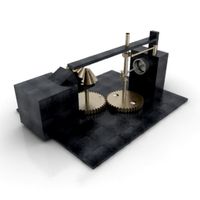
Device 3D Model
... model
archive3d
device
device n050608 - 3d model (*.gsm+*.3ds) for interior 3d visualization.
archive3d
free
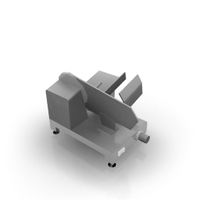
Device 3D Model
...e 3d model
archive3d
device gear
device - 3d model (*.gsm+*.3ds) for interior 3d visualization.
turbosquid
$24

ICG Device
...turbosquid
royalty free 3d model icg device for download as on turbosquid: 3d models for games, architecture, videos. (1692389)
3d_export
$5
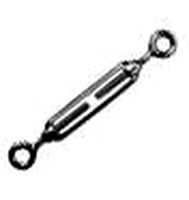
rope tighten device
...rope tighten device
3dexport
rope tighten device
3d_export
$5

front clamping device
...front clamping device
3dexport
front clamping device
archive3d
free

Device 3D Model
...e3d
device kitchen ware
device n130208 - 3d model (*.gsm+*.3ds) for interior 3d visualization.

